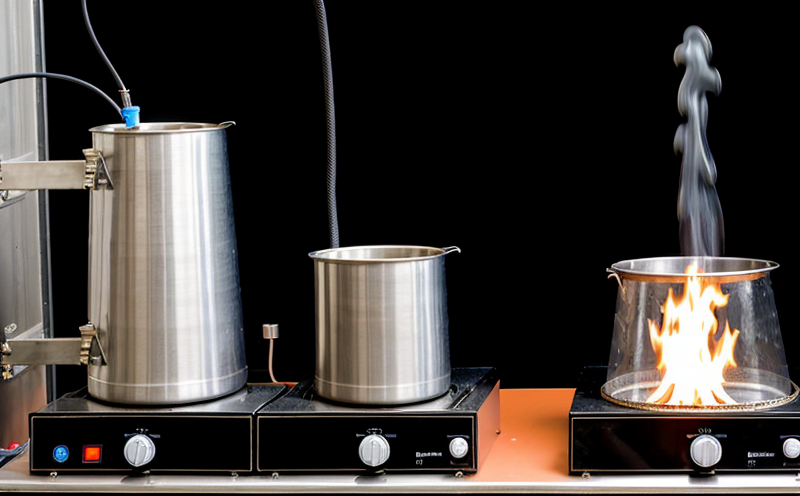Heat Release Testing of Plastics and Polymers
The demand for fire safety in various sectors, including construction, automotive, and electronics, has seen a significant rise. The choice of materials used directly impacts the overall safety performance of these products. Heat release testing is an essential process that evaluates how much heat and smoke are released by plastics and polymers when exposed to fire. This service plays a crucial role in ensuring compliance with international standards such as ISO 56602, IEC 60695-11-13, and ASTM E648.
During heat release testing, the specimen is subjected to controlled conditions that mimic real-world fire scenarios. The apparatus used for this purpose includes a cone calorimeter, which measures the heat released, smoke production, mass loss rate, and char yield of the material under specified test conditions. This information is vital in assessing the flammability characteristics and overall thermal stability of plastics and polymers.
For accurate testing results, proper specimen preparation is crucial. This involves cutting the plastic or polymer into standard-sized specimens that are homogeneous in composition. The testing process requires precise control over temperature, oxygen concentration, and heat flux to ensure reproducibility and consistency across multiple samples. Understanding these parameters helps engineers design safer products by selecting materials with optimal flammability characteristics.
The results of heat release tests provide valuable insights into the fire safety performance of plastics and polymers. These data can be used during product development, quality assurance processes, and regulatory compliance activities. By adhering to industry best practices and leveraging advanced testing equipment like cone calorimeters, laboratories ensure that they deliver accurate and reliable test results.
Heat release tests are particularly important in sectors where fire safety is paramount, such as the construction industry. For instance, insulation materials used in buildings must meet stringent fire safety requirements to prevent the spread of fire during emergencies. Similarly, automotive interiors require flame-resistant components to protect passengers and reduce the risk of injury or death in case of a vehicle fire.
By implementing heat release testing early in the product development cycle, manufacturers can identify potential issues before large-scale production begins. This proactive approach not only enhances safety but also reduces costly recalls and redesigns later on. Additionally, compliance with regulatory standards helps businesses avoid legal risks associated with non-compliance.
In conclusion, heat release testing of plastics and polymers is a critical service that supports fire safety initiatives across multiple industries. Its ability to provide accurate and reliable data makes it an indispensable tool for quality managers, compliance officers, R&D engineers, and procurement teams alike.
Customer Impact and Satisfaction
Our heat release testing service has significantly impacted our customers by helping them achieve higher levels of fire safety in their products. By providing accurate and reliable test results, we enable manufacturers to make informed decisions about material selection and design modifications that enhance the overall performance of their products.
- We help ensure compliance with international standards such as ISO 56602, IEC 60695-11-13, and ASTM E648.
- Our services contribute to safer buildings by ensuring that insulation materials meet stringent fire safety requirements.
- We support the automotive industry in developing flame-resistant components for vehicle interiors.
Customer satisfaction is a key priority for us. We strive to deliver timely and accurate results while maintaining close communication throughout the testing process. Our experienced team of professionals ensures that each project receives personalized attention, leading to successful outcomes and satisfied clients.
Environmental and Sustainability Contributions
- The data obtained from heat release tests helps manufacturers design products with improved fire safety characteristics. This contributes to reduced risk of fires in various environments, thereby promoting a safer living space.
- By ensuring compliance with international standards, our service supports the sustainable development goals set forth by organizations like the United Nations. These initiatives aim at reducing environmental impacts and improving public health globally.
Competitive Advantage and Market Impact
In today's competitive market, ensuring product safety is not just a legal requirement but also a key differentiator. By incorporating heat release testing into their quality assurance processes, companies can demonstrate their commitment to fire safety and sustainability. This enhances customer trust and loyalty, fostering long-term relationships.
Our service provides valuable data that can be used during product development, allowing manufacturers to stay ahead of regulatory changes and emerging trends in the industry. This forward-thinking approach gives businesses a competitive edge, enabling them to meet changing demands and capitalize on new opportunities.





